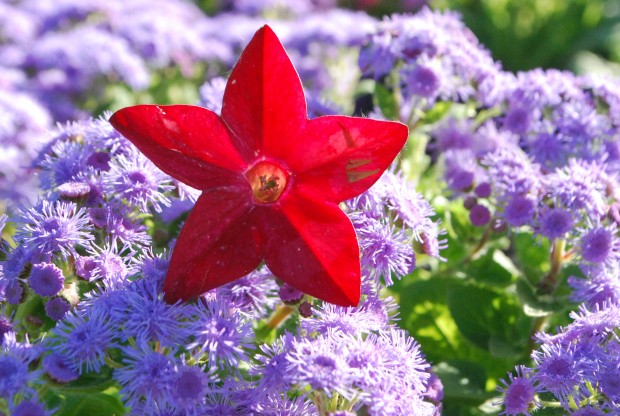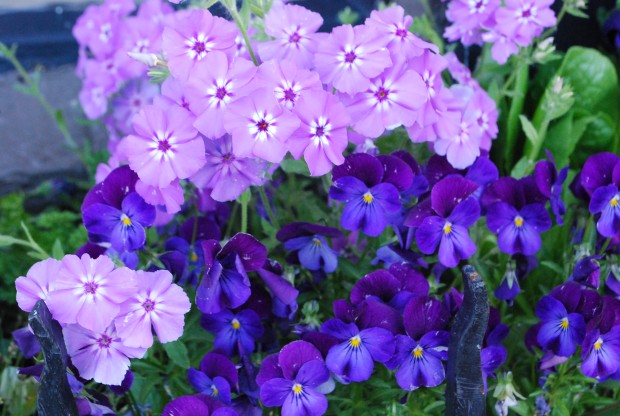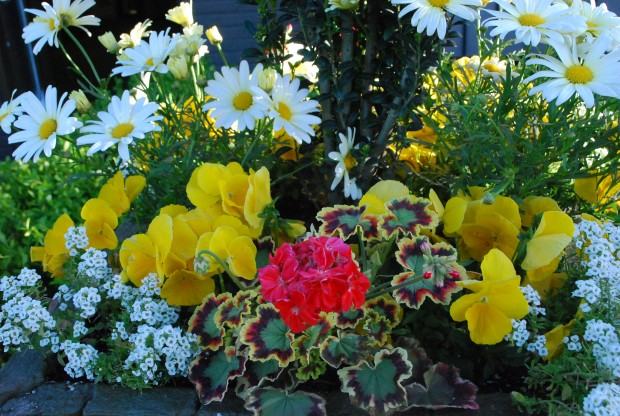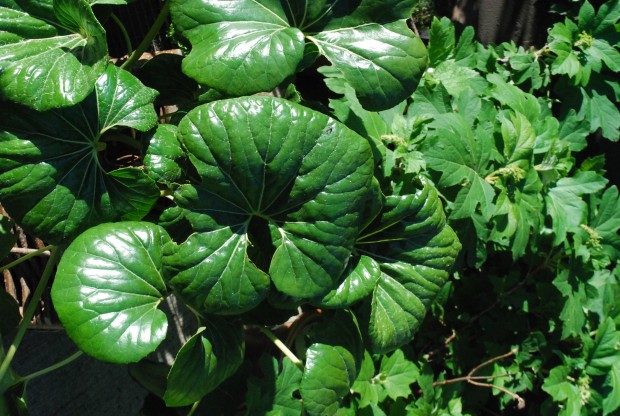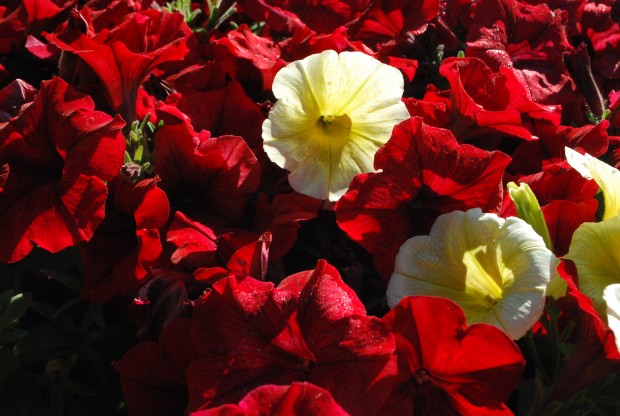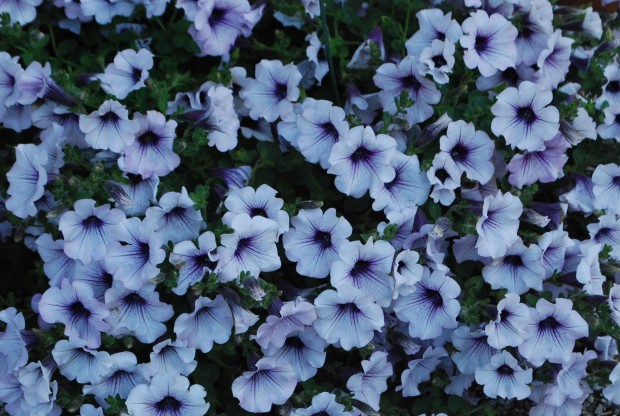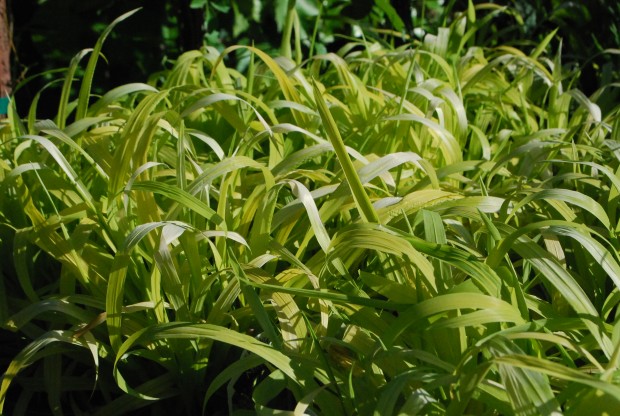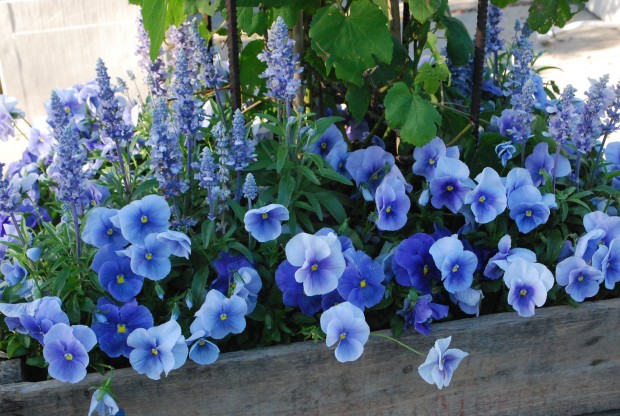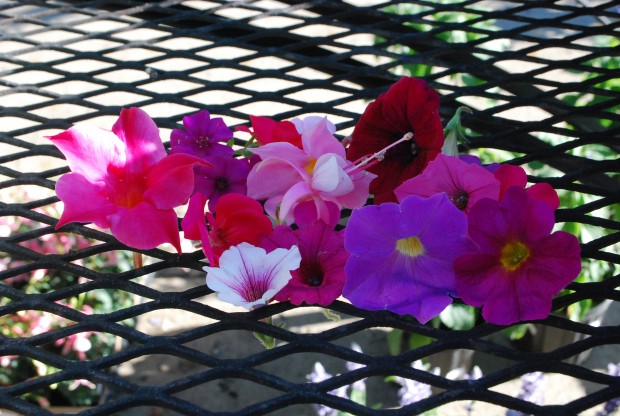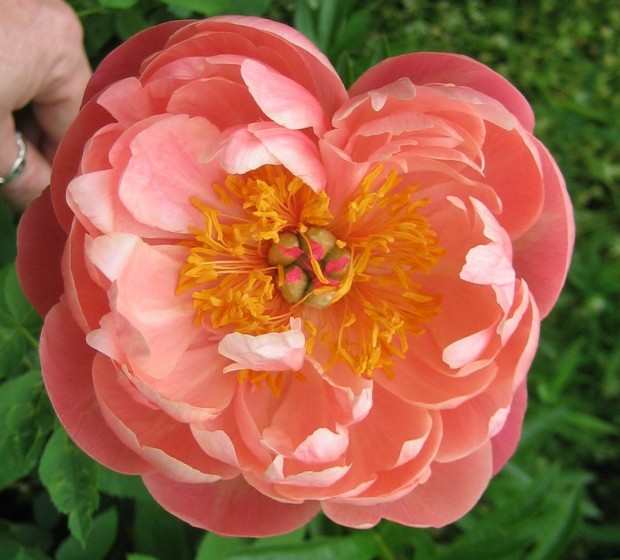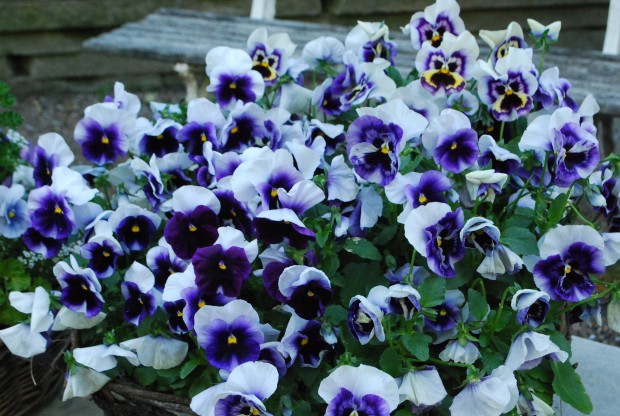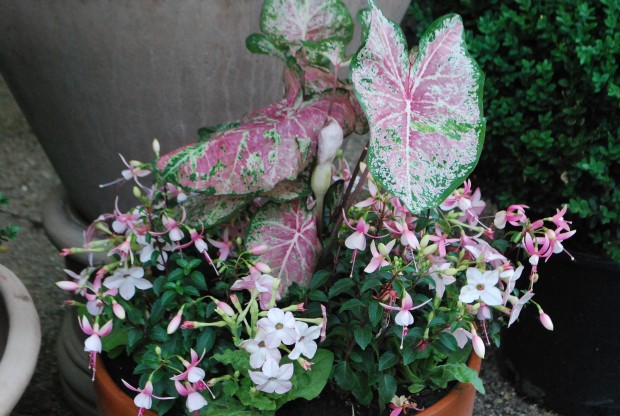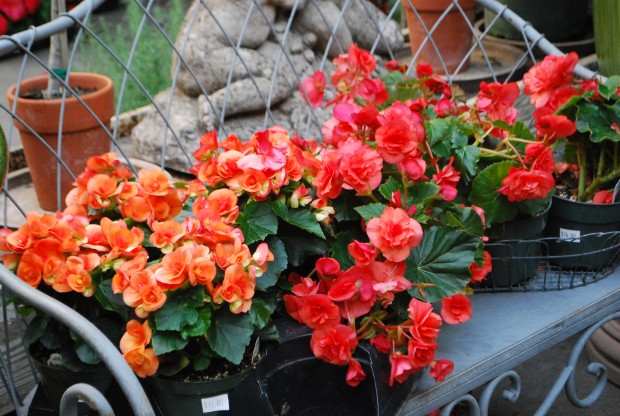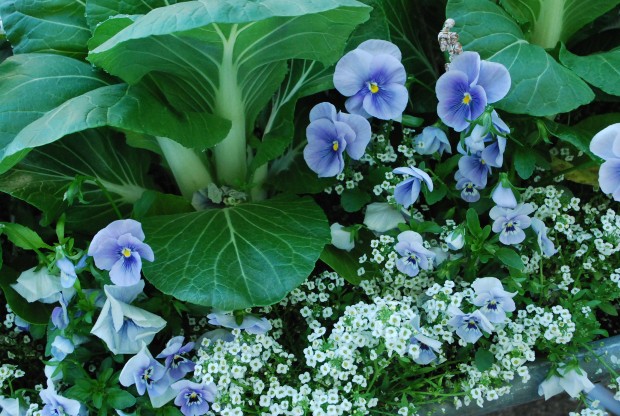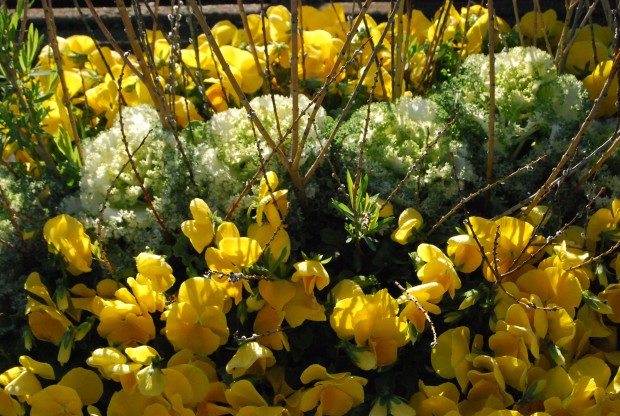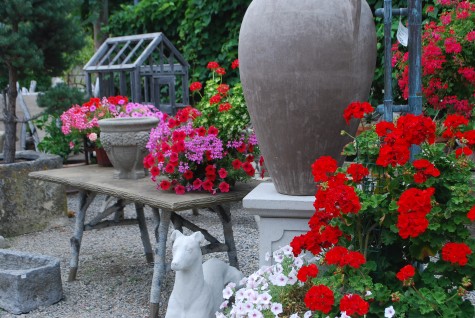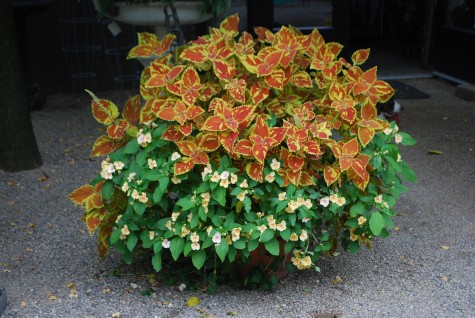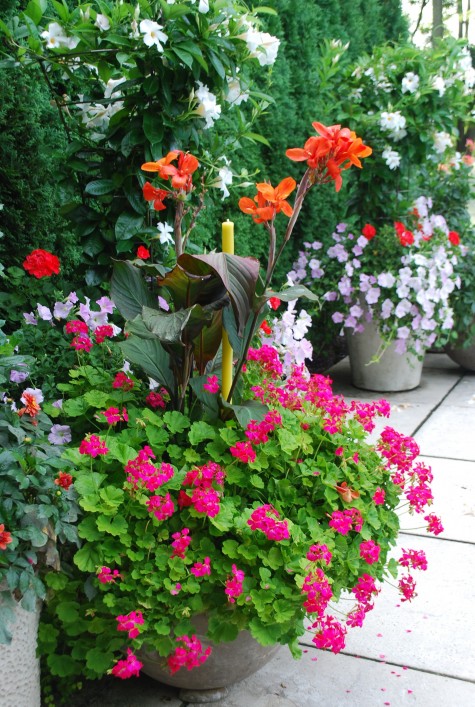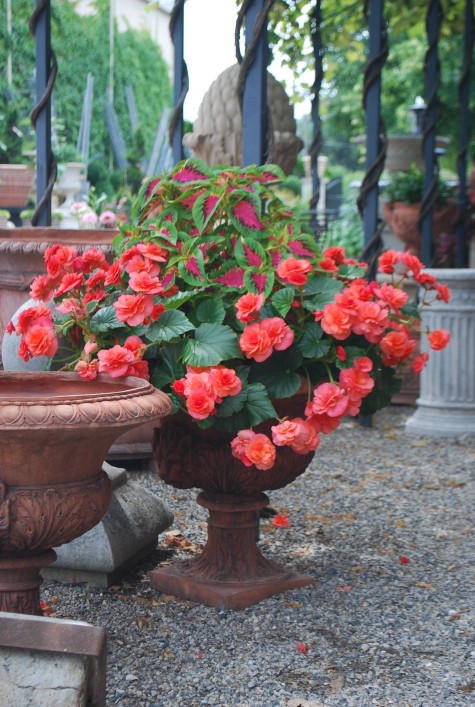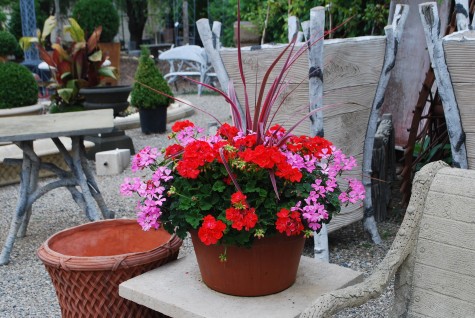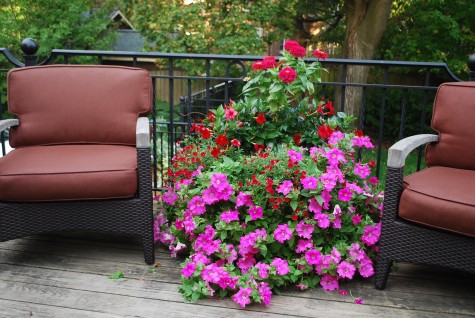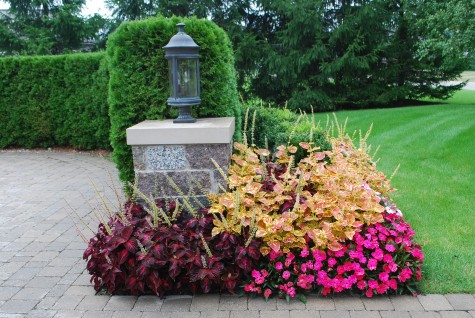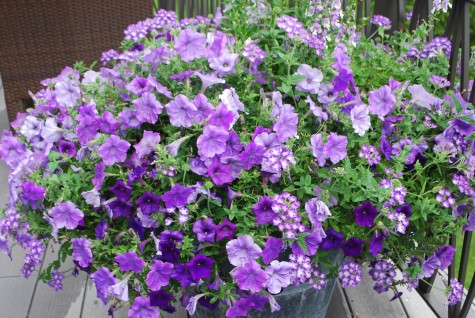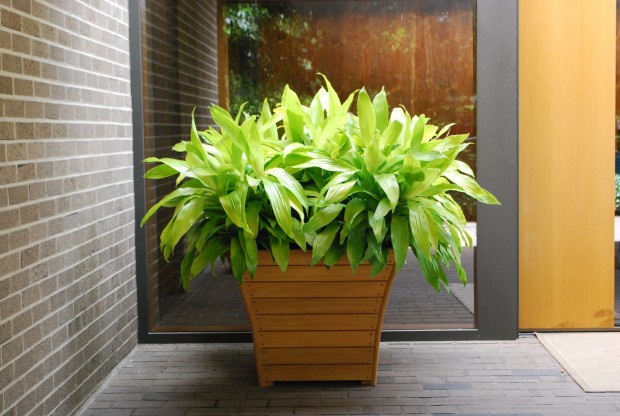 Planting the annuals and containers is a very exciting time-and an exhausting one. So in lieu of writing, I thought to just post some pictures of my favorite annual plants. What makes them a favorite? This glowingly green Janet Craig dracaena will thrive in very low light.
Planting the annuals and containers is a very exciting time-and an exhausting one. So in lieu of writing, I thought to just post some pictures of my favorite annual plants. What makes them a favorite? This glowingly green Janet Craig dracaena will thrive in very low light.
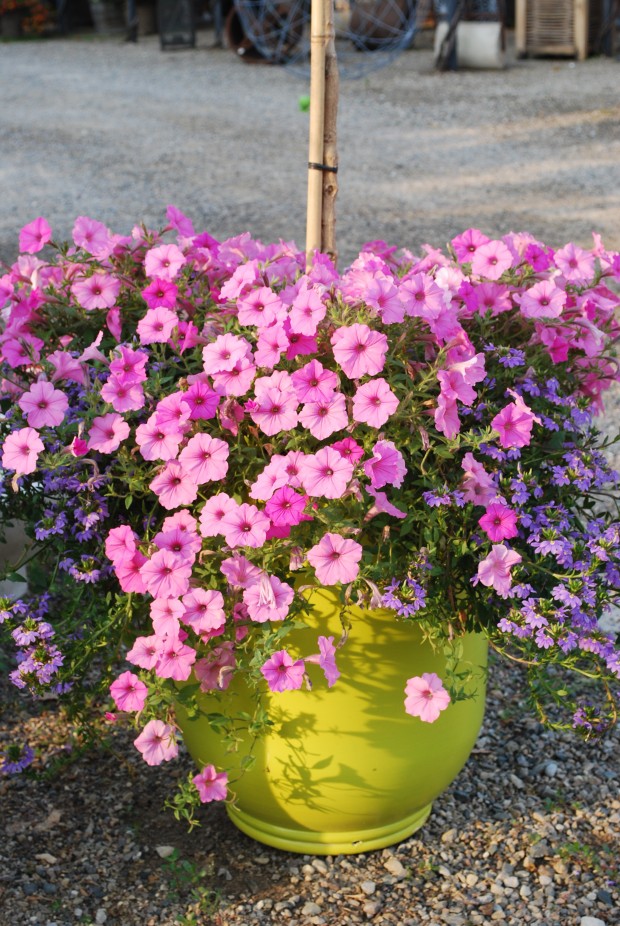 The Vista series of petunia is very vigorous, even long into the fall.
The Vista series of petunia is very vigorous, even long into the fall.
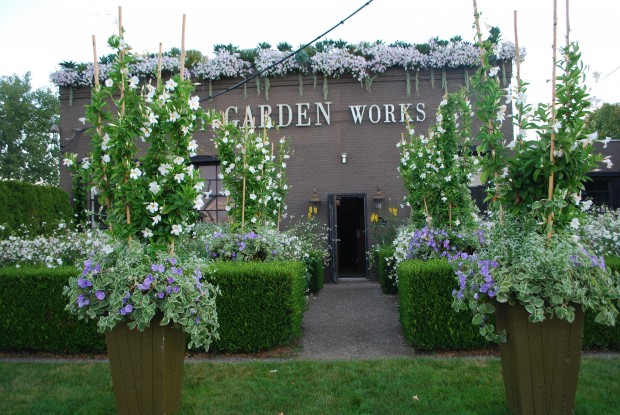 White mandevillea vines produce large showy flowers, and the foliage is glossy and disease resistant.
White mandevillea vines produce large showy flowers, and the foliage is glossy and disease resistant.
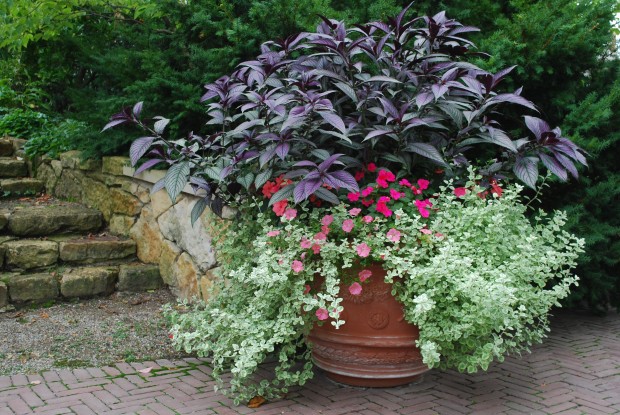 Persian Shield is a color like no other, and will grow to a large size in a partially shaded spot.
Persian Shield is a color like no other, and will grow to a large size in a partially shaded spot.
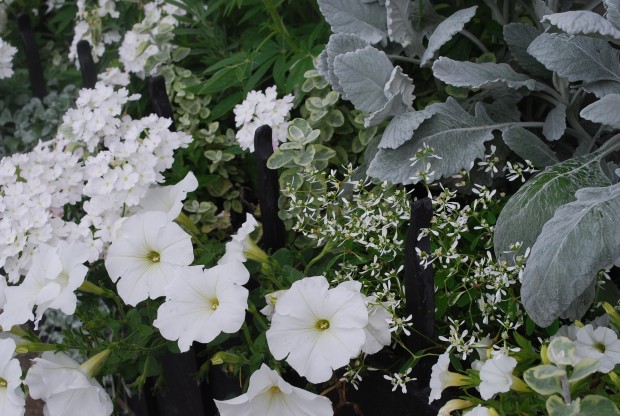 Euphorbia Diamond Frost is like having a thousand tiny white lights dancing over the surface of a container planting. Cirrus dusty miller has a velvety surface, and a beautiful texture. Petunias smell like summer.
Euphorbia Diamond Frost is like having a thousand tiny white lights dancing over the surface of a container planting. Cirrus dusty miller has a velvety surface, and a beautiful texture. Petunias smell like summer.
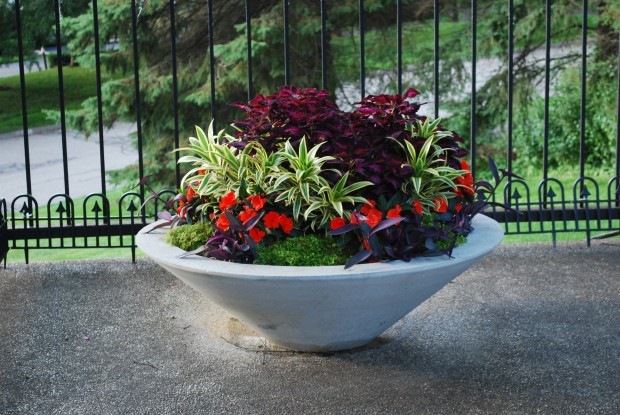 coleus are prized for the unusual color of their foliage, as are the variegated dwarf dracaena pictured above.
coleus are prized for the unusual color of their foliage, as are the variegated dwarf dracaena pictured above.
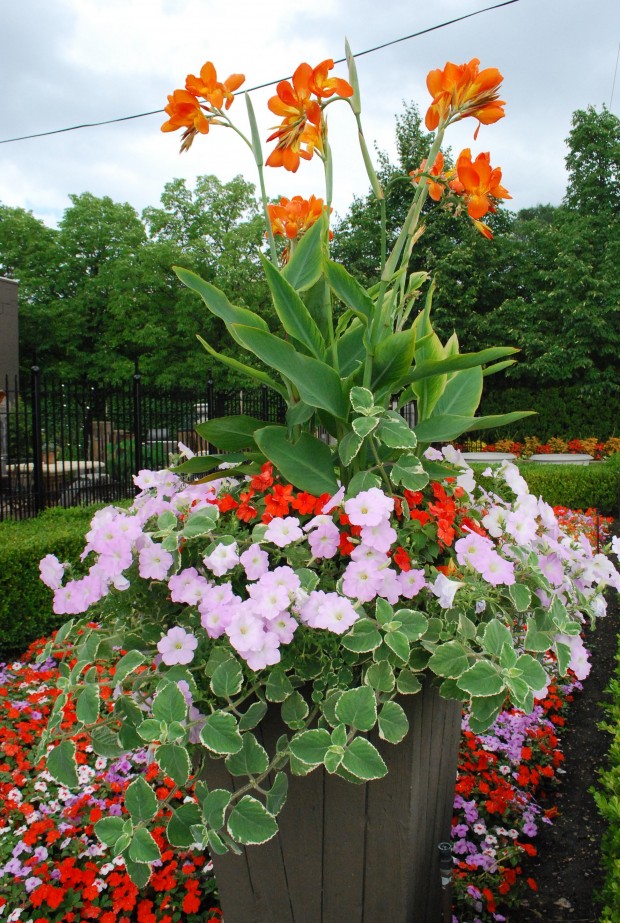 Cannas grow big and tall, and come in a whole range of colors. Canna Orange Punch blooms profusely.
Cannas grow big and tall, and come in a whole range of colors. Canna Orange Punch blooms profusely.
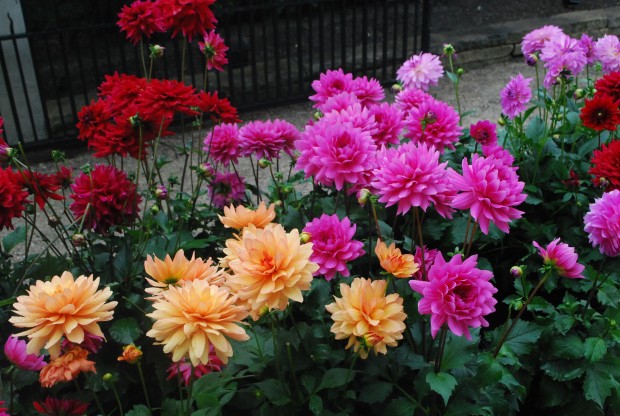 Dahlias are the show girls of the annual world. They sport huge flowers in every imaginable color except blue. They are at their showy best in September and October.
Dahlias are the show girls of the annual world. They sport huge flowers in every imaginable color except blue. They are at their showy best in September and October. 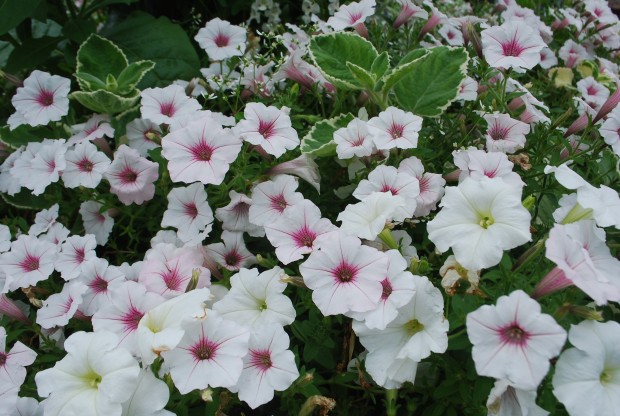 Silverberry petunias bloom profusely, and do not need deadheading.
Silverberry petunias bloom profusely, and do not need deadheading.
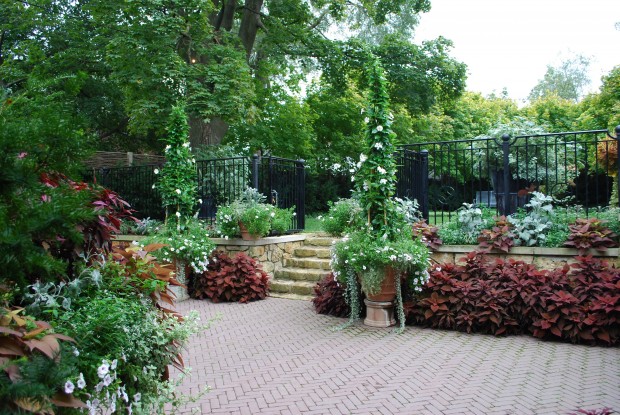 Velvet mocha coleus is a beautiful orangy brown
Velvet mocha coleus is a beautiful orangy brown
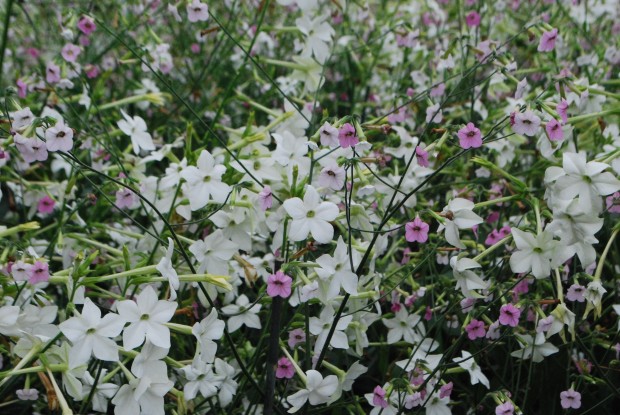 All of the nicotiana varieties are charming, and beloved by hummingbirds. I grow them all.
All of the nicotiana varieties are charming, and beloved by hummingbirds. I grow them all.
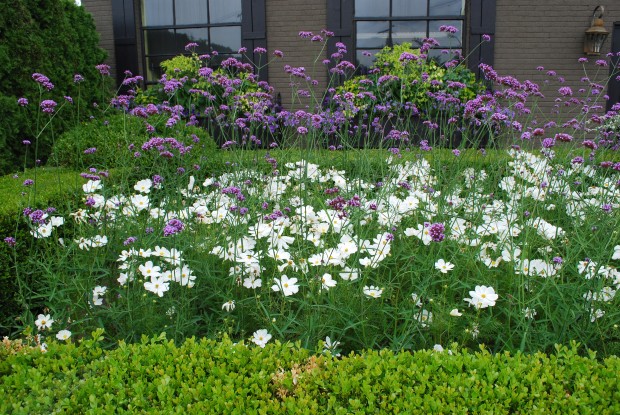 Verbena bonariensis is tall growing, and imparts a meadow like look to any in ground annual planting.
Verbena bonariensis is tall growing, and imparts a meadow like look to any in ground annual planting.
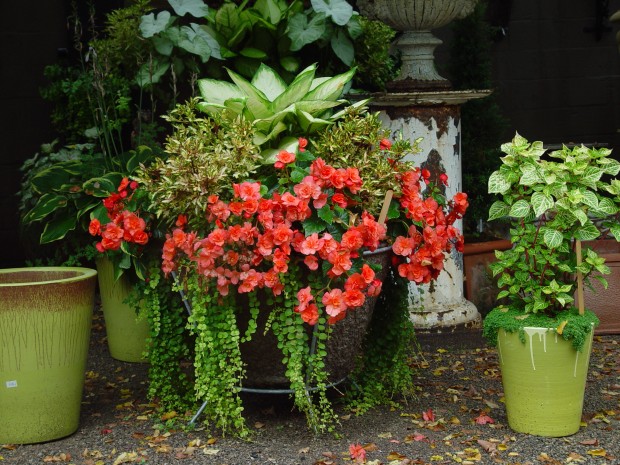 Solenia begonias are easy to grow. Just go easy on the water. Are these my only favorites. Oh no. I like them all really. They all have something different to recommend about them. Choosing which ones to grow depends somewhat on what you need from them.
Solenia begonias are easy to grow. Just go easy on the water. Are these my only favorites. Oh no. I like them all really. They all have something different to recommend about them. Choosing which ones to grow depends somewhat on what you need from them.
